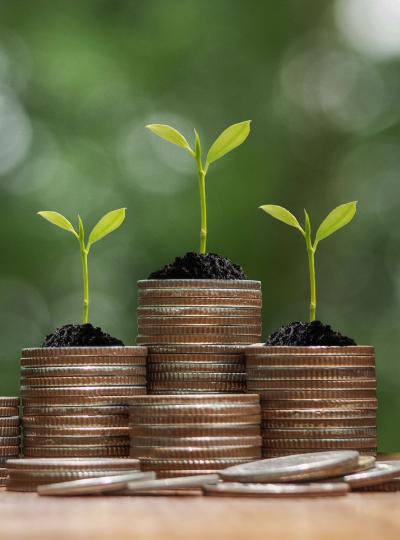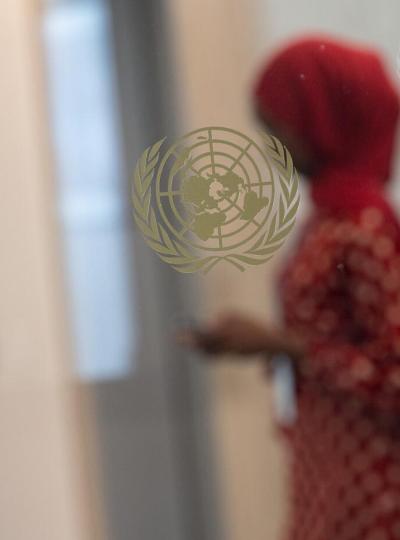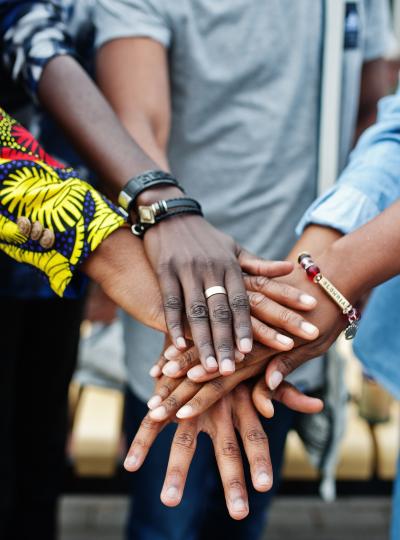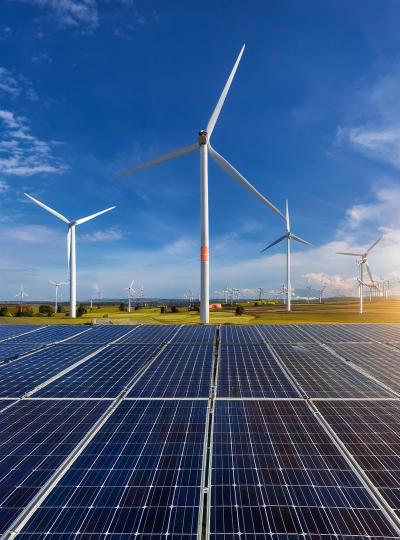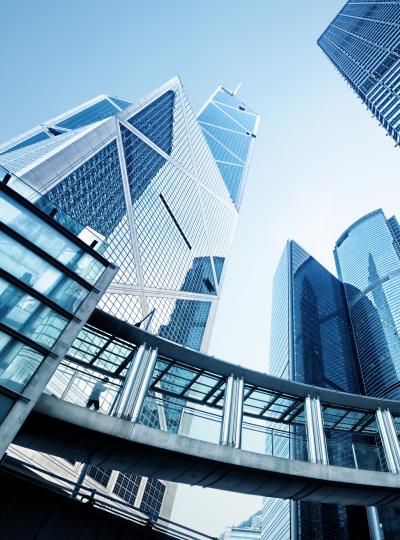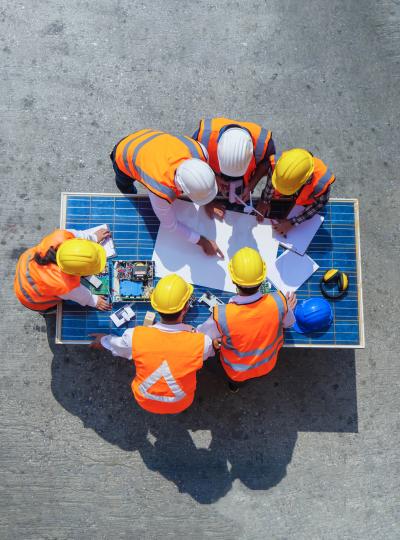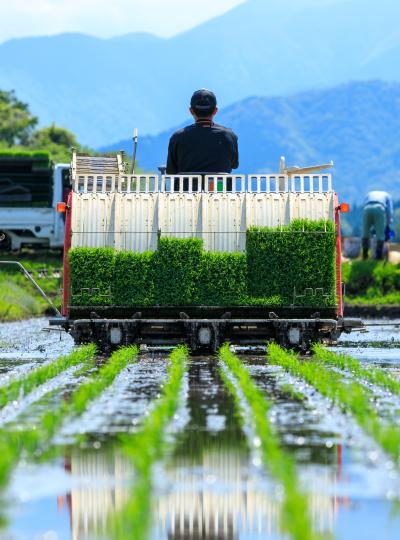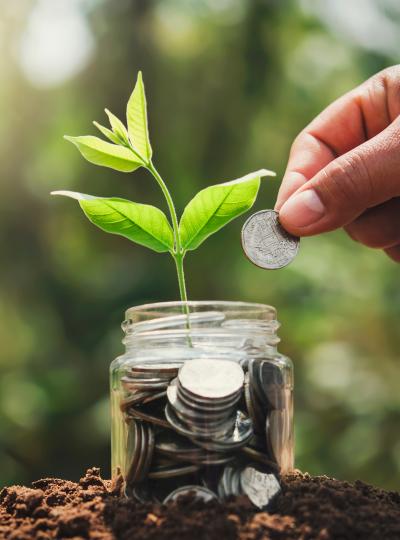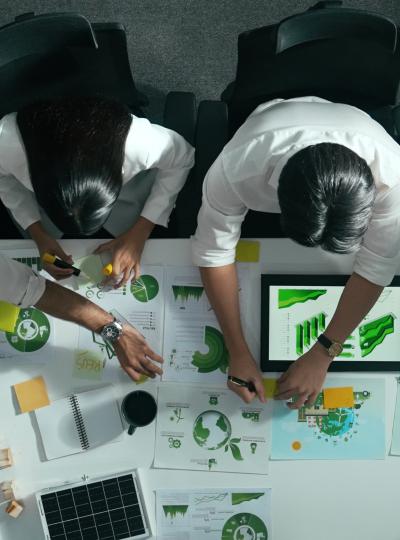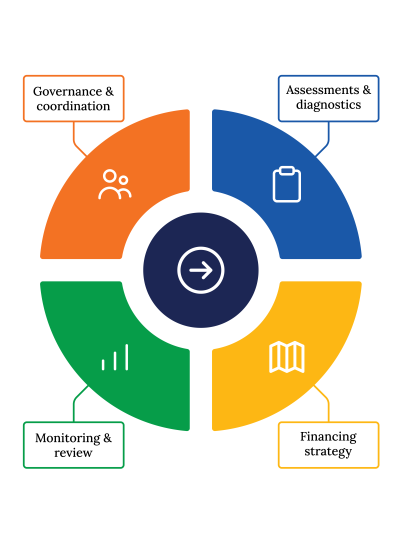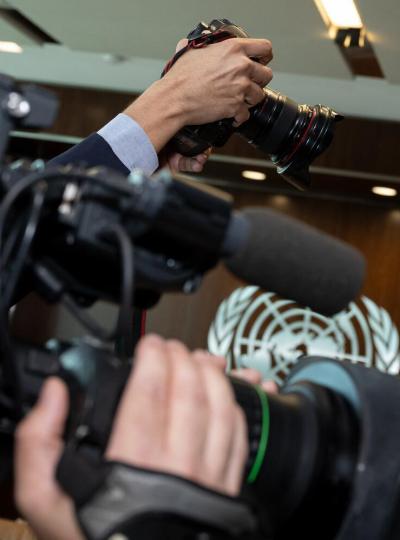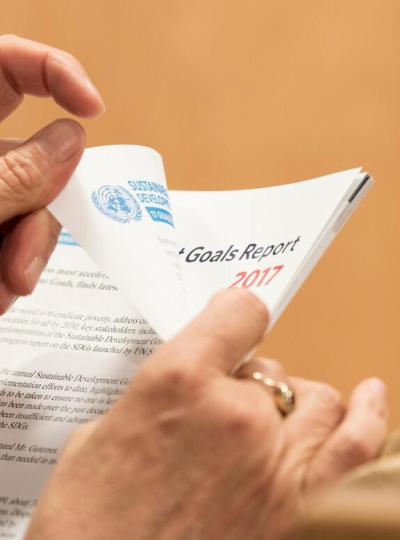Biomass for Electricity Generation
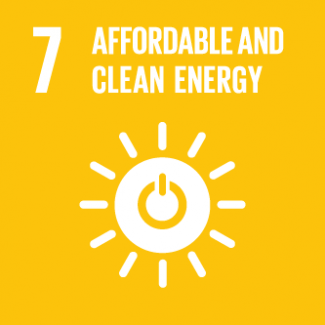
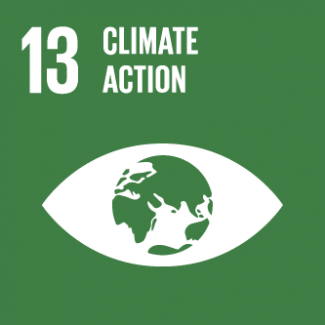
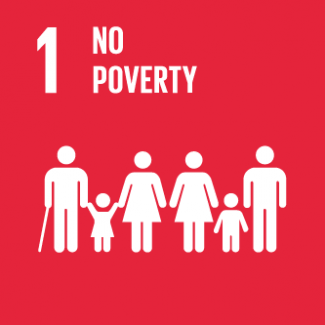
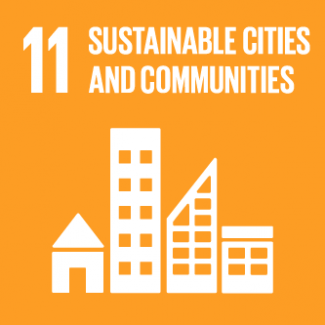
Business Model Description
Construct biomass energy facilities using biowaste from cocoa, coffee, cotton, palm oil, and other types of agricultural production to generate energy by combustion. Partnerships with cooperatives, large-scale farmers or food processing industries can be set up to ensure a constant supply. The energy produced can then be sold to the surrounding towns and villages, or to the industrial sector, based on the Electricity Code (article 49), which allows for contracts of purchase. Ashes resulting from combustion can serve as biofertilizers and benefit farmers (19).
Expected Impact
Offer cheaper and greener energy to households and SMEs while generating revenues for farmers.
How is this information gathered?
Investment opportunities with potential to contribute to sustainable development are based on country-level SDG Investor Maps.
Disclaimer
UNDP, the Private Finance for the SDGs, and their affiliates (collectively “UNDP”) do not seek or solicit investment for programmes, projects, or opportunities described on this site (collectively “Programmes”) or any other Programmes, and nothing on this page should constitute a solicitation for investment. The actors listed on this site are not partners of UNDP, and their inclusion should not be construed as an endorsement or recommendation by UNDP for any relationship or investment.
The descriptions on this page are provided for informational purposes only. Only companies and enterprises that appear under the case study tab have been validated and vetted through UNDP programmes such as the Growth Stage Impact Ventures (GSIV), Business Call to Action (BCtA), or through other UN agencies. Even then, under no circumstances should their appearance on this website be construed as an endorsement for any relationship or investment. UNDP assumes no liability for investment losses directly or indirectly resulting from recommendations made, implied, or inferred by its research. Likewise, UNDP assumes no claim to investment gains directly or indirectly resulting from trading profits, investment management, or advisory fees obtained by following investment recommendations made, implied, or inferred by its research.
Investment involves risk, and all investments should be made with the supervision of a professional investment manager or advisor. The materials on the website are not an offer to sell or a solicitation of an offer to buy any investment, security, or commodity, nor shall any security be offered or sold to any person, in any jurisdiction in which such offer would be unlawful under the securities laws of such jurisdiction.
Country & Regions
- Côte d'Ivoire: Savanes
- Côte d'Ivoire: Gôh-Djiboua
- Côte d'Ivoire: Comoé
- Côte d'Ivoire: Bas-Sassandra
- Côte d'Ivoire: Montagnes
Sector Classification
Renewable Resources and Alternative Energy
Development need
Although renewables constitute a more inclusive energy source amid rising national demand and a prevalent energy poverty, production depends mainly on fossil fuels (69% of total). Increases in energy production enabled to triple the share of the population with access to electricity (95%) but the share of renewable energy in the mix, notably hydroelectric, has decreased between 2010 and 2023 (1, 2, 17).
Policy priority
Under the National Renewable Energy Action Plan 2014–2030 the government targets 42% of renewables in the mix by 2030, revised to 45%. It also aims to expand production capacity to 4,000 MW by 2025 and 5,000 MW by 2030. In its NDCs, Côte d'Ivoire pledged to increase electricity production from renewables. Expanding access to energy and renewables is also a central theme of the National Development Plan (Pillar 3) and is a crucial element of Côte d'Ivoire's goal of becoming an upper-middle income country, as set out in its Vision 2030 (3, 4, 5, 17, 18).
Gender inequalities and marginalization issues
While access to electricity has improved, it remains limited in northern areas. Some households in grid-connected settlements do not have access to electricity, and affordability remains a pressing concern. Energy poverty concerns 91% of the rural population (6).
Investment opportunities introduction
Africa's 3rd largest electricity network, Côte d'Ivoire can attract USD 9 billion investments in renewable energy by 2030. Biomass potential equals 16.7 million tons/year from cacao, palm oil, coffee, etc. while solar potential exceeds 1,900 kWh/m². This favors investments at utility scale but also for mini-grid and hybrid applications (7, 9).
Key bottlenecks introduction
Renewable projects are exposed to climatic events such as storms, high winds, floods and landslides which could damage production plants and electricity poles. They also require prior authorization from the Ministry of Energy to ensure alignment with national energy efficiency and sustainability goals, which may involve a lengthy process (9, 19).
Alternative Energy
Development need
90% of the forests have vanished in 60 years, reducing agricultural productivity. Despite grid connection, high costs hamper electricity access, forcing reliance on fuels. Moreover, the country struggles with droughts, uneven water access (67% rural), and poor food market hygiene, exacerbating health risks. Biowaste recycling and green energies could mitigate these issues (4, 11, 12).
Policy priority
The programs "Electricité pour Tous" and "Accès à l'eau potable en milieu rural" aim for universal access to electricity and drinking water by 2025 and 2030, notably through solar-powered water pumps. These include financial inclusion and the installation of 1,200 water infrastructures. The nation plans to increase solar energy production, targeting an 7-9% share in its energy mix, supported by IFC's Scaling Solar program (8, 9, 14).
Gender inequalities and marginalization issues
In Côte d'Ivoire's northern regions, 87% of households use wood for energy due to high electricity costs, intensifying deforestation despite government subsidies for methane gas, which still pollutes significantly. Additionally, water access is closely linked to income, with informal city settlements and remote villages facing severe shortages, worsening their economic and health challenges (10, 12).
Investment opportunities introduction
Côte d'Ivoire supports investment in infrastructure to achieve universal water access by 2030 with a USD 5 billion pledge. The government also supports renewable energy projects such as the Aboisso biomass plant. Additionally, with financial backing from IFC and AfDB, developments such as the USD 400 million Azito power station have been launched (9, 14).
Key bottlenecks introduction
Poor road network maintenance may hamper biomass production, as traffic interruptions can halt operations. Additionally, dust accumulation and storms reduce solar plant productivity. Moreover, local residents may struggle to maintain and replace outdated water pumps, compounded by limited access to finance, especially in villages lacking government support (8, 13, 16).
Biofuels
Pipeline Opportunity
Biomass for Electricity Generation
Construct biomass energy facilities using biowaste from cocoa, coffee, cotton, palm oil, and other types of agricultural production to generate energy by combustion. Partnerships with cooperatives, large-scale farmers or food processing industries can be set up to ensure a constant supply. The energy produced can then be sold to the surrounding towns and villages, or to the industrial sector, based on the Electricity Code (article 49), which allows for contracts of purchase. Ashes resulting from combustion can serve as biofertilizers and benefit farmers (19).
Business Case
Market Size and Environment
311 to 411 MW of additional biomass energy production capacity by 2030
In Cote d’Ivoire, different sources of biomass are abundant due to agricultural activity, including palm oil waste, cocoa and cotton waste, contributing to a potential increase in energy production capacity from biomass by 411 MW until 2030 (54).
Indicative Return
15% - 20%
Depending on the source, biomass energy projects are expected to generate an Internal Rate of Return of around 15% based on the large-scale benchmark projects in Côte d'Ivoire and the Economic Community of West African States (ECOWAS) region (46).
Investment Timeframe
Medium Term (5–10 years)
Depending on the source, biomass energy projects are expected to generate positive returns in five to ten years based on the large-scale benchmark projects in Côte d'Ivoire and the Economic Community of West African States (ECOWAS) region (46).
Ticket Size
> USD 10 million
Market Risks & Scale Obstacles
Capital - CapEx Intensive
Business - Supply Chain Constraints
Impact Case
Sustainable Development Need
Access to electricity is only 37% in rural areas, and an expansion of the supply is required to meet demographic pressures and a growing industry (21).
Over-reliance on wood and charcoal for energy generation, used by over 60 to 80% of households because it is cheaper, remains highly polluting and emits significantly more CO2 (3, 40).
Air pollution, notably due to charcoal and wood combustion, is associated with 34,000 premature deaths annually in Côte d'Ivoire (4).
Gender & Marginalisation
Northern regions are less connected to the national grid. While over 70% of Ivorians live in villages connected to the electricity grid, just 29% of households use it due to last-mile connection costs and energy prices (3).
Energy poverty concerns 91% of the rural population (4).
Expected Development Outcome
The construction of biomass-fired power plants would increase energy supply and help meet the increasing energy demand due to population growth. The largest power plants can benefit more than a million inhabitants (31).
Transitioning to biomass energy production could improve local health outcomes and reduce environmental impact, as biomass emits less CO₂ compared to conventional energy sources and poses fewer health risks than charcoal and wood burning (23, 49).
"Placing production plants near agricultural areas can ensure a reliable biomass supply and directly benefit nearby rural communities, which tend to face higher rates of energy poverty (6). "
Gender & Marginalisation
As biomass plants can be relatively small in size and provide cheaper electricity, this could provide a solution for the northern agrarian regions.
Primary SDGs addressed

7.1.1 Proportion of population with access to electricity
7.1.2 Proportion of population with primary reliance on clean fuels and technology
7.3.1 Energy intensity measured in terms of primary energy and GDP
In 2023, 95% of the population has access to electricity, but in 2022, it was 45.3% in rural areas. These figures also do not account for real use, which is typically lower as some households cannot afford grid connection (17, 48).
The proportion of population with primary reliance on clean fuels and technology was 42.6% in 2022, and 7.4% in rural areas (40).
Côte d'Ivoire's primary energy production per capita was 17.3 GJ or 63% of the African average and 22% of the world average (8).
The government's plan for renewable energy (PANER) targets universal access to electricity and 42% of renewable energy in the mix by 2030, revised to 45% (3, 17).
The government aims to multiply by five the number of households using biogas or solar energy and liquefied natural gas for cooking purposes by 2030, from 6.3 million in 2016 to 33,1 million in 2030 (3).
N/A
Secondary SDGs addressed



Directly impacted stakeholders
People
Gender inequality and/or marginalization
Planet
Corporates
Public sector
Indirectly impacted stakeholders
People
Gender inequality and/or marginalization
Public sector
Outcome Risks
Without strict supervision to ensure the enforcement of environmental and worker safety standards, neighbouring communities could face sanitary risks, and energy production might lead to increased CO2 emissions.
The use of agricultural waste for biomass energy could lead to unintended environmental consequences, such as soil degradation or reduced soil fertility, if the removal of crop residues reduces the organic matter that would otherwise decompose and enrich the soil. This could negatively impact agricultural productivity in the long term.
If adequate security measures are not enforced, there is a moderate risk for workers to suffer from explosions and fires caused by the burning of biomass (8).
Biomass energy is not carbon-neutral. Its emission are partly offset by the fact that the carbon released during the combustion is equal to the amount that the plants stored during their lifetime, but this type of energy production emits more than solar or wind, for instance.
Gender inequality and/or marginalization risk: The production of energy from biomass is likely to affect the traditional activities of collecting and trading wood and charcoal, affecting the incomes of local populations.
Impact Risks
Climate variability, especially droughts and floods, could disrupt the supply of biomass feedstock (such as cocoa husks or palm waste) needed for electricity generation, leading to lower than expected energy production and affecting the overall environmental and social impact.
Increased electricity generation from biowaste may limit other valuable uses of biowaste, including as fertilizer, which has been proven to be a low-carbon fertilizer (38).
If production increases by less than demand, and tariffs are too high, biomass energy production could have little impact on energy poverty.
Impact Classification
What
Biomass energy plants will provide cheaper and more renewable energy while generating additional revenues for farmers selling biowaste.
Who
The main beneficiaries are households, smallholder farmers, and industries, especially in rural areas.
Risk
The vulnerability of agricultural inputs for biomass to climate variability may disrupt anticipated impacts, as climate challenges could reduce the availability of agricultural waste.
Contribution
Using biowaste to produce electricity replaces other uses or practices, such as biocharcoal or combustion, which emit more toxic substances and have a lower welfare effect (44).
How Much
As part of its goal to reach 45% of renewable energy of the mix by 2030, the government aims to add 311 to 411 MW of biomass energy production capacity by 2030 (4, 53, 54).
Impact Thesis
Offer cheaper and greener energy to households and SMEs while generating revenues for farmers.
Enabling Environment
Policy Environment
The National Renewable Energy Action Plan 2014–2030 (Plan d’action national des énergies renouvelables 2014-2030 or PANER) outlines key objectives for access to clean energy, notably through improved energy efficiency and use of biomass and solar energy (3).
The National Rural Electrification Program (Programme National d’Electrification Rurale or PRONER) outlines specific objectives per region to increase electricity access rate, with a budget of 400 bn FCFA (USD 665 million). Renewable energies, notably biomass, serve as support for the grid, particularly in localities which experience voltage drops exceeding 10% (3, 32).
The National Energy Efficiency Action Plan ("Plan d’Action National d’Efficacité Énergétique" or PANEE) targets improvements in energy efficiency across various sectors from 2016 to 2030. This plan aims to reduce energy losses and promote biomass energy for both national electricity generation and as a sustainable alternative to charcoal and wood for household fuel use (33).
Côte d'Ivoire's Nationally Determined Contributions (NDCs) stress the development of biomass plants as a key strategy to reduce greenhouse gas emissions. A major objective of the country's revised climate strategies is the reduction of short-lived climate pollutants (SLCPs), such as methane, black carbon, and fine particles (4).
Financial Environment
Financial incentives: Development partners such as the United States Trade and Development Agency (USTDA) and the International Finance Corporation (IFC) provide grants and loans for feasibility studies, and/or power plants construction (2, 27, 35).
Fiscal incentives: The 2018 Investment Code provides fiscal incentives for investments in renewable energies, including exemption from various commercial and profit taxes. It also offers an exemption from patents and licenses contribution and an 80% to 90% reduction of employers' contribution (41).
Regulatory Environment
Energy sector is liberalizing production while maintaining a monopoly on distribution. No feed-in tariff exist but Côte d'Ivoire enforces Power Purchase Agreements where the government commits to buying energy at a set price for typically 25 years, ensuring stability for energy producers (2, 37).
Law No. 2014-132 (Electricity Code of 2014) supersedes the Electricity Law of 1985. This code facilitates private involvement in electricity generation, transmission, distribution, and retailing, thereby dismantling the state monopoly (46).
Decree No. 2016-782 outlines the modalities surrounding electricity production, transport, dispatching, distribution and commercialization concessions, including the creation of a dedicated steering committee to supervise the negotiations (22).
Decree No. 2016-783 outlines the regulations applicable to the sale of energy from an independent power producer to the state or eligibility clients (51).
"Decree No. 2016-786 outlines the rules applicable to electricity pricing. The sale prices of electricity are set and revised by an interministerial order to ensure the financial balance of the electricity sector, covering the revenues of concessionaires and public service missions (25). "
Marketplace Participants
Private Sector
Meridiam, EDF, Companie Ivoirienne d'Electricité, CI Energies, CIPREL, Azito, Aggreko, Biovéa, Confédération Générale des Entreprises de Côte d’Ivoire (CGECI).
Government
Autorité Nationale de Régulation du Secteur de l’Électricité (ANARE-CI), Ministère des Mines, du Pétrole et de l'Enérgie, Ministère de la Salubrité, de l’Environnement et du Développement Durable, Centre de Promotion des Investissements en Côte d’Ivoire (CEPICI).
Multilaterals
US Trade and Development Agency (USTDA), Proparco, International Finance Corporation (IFC).
Public-Private Partnership
The Aboisso plant was developed under a public-private partnership (PPP) model, with the Biovéa Energie consortium of private enterprises awarded a 25-year concession under a Build-Operate-Transfer (BOT) framework (47).
Target Locations
Côte d'Ivoire: Savanes
Côte d'Ivoire: Gôh-Djiboua
Côte d'Ivoire: Comoé
Côte d'Ivoire: Bas-Sassandra
Côte d'Ivoire: Montagnes
References
- (1) Connaissance des Energies. 2020. Côte d'Ivoire : la principale centrale électrique va être agrandie pour augmenter la production nationale de 10%. https://www.connaissancedesenergies.org/afp/cote-divoire-la-principale-centrale-electrique-va-etre-agrandie-pour-augmenter-la-production-nationale-de-10-200309
- (2) Banque Mondiale. 2020. The secret to cote d'ivoire's electric success. https://www.banquemondiale.org/fr/news/feature/2020/07/23/the-secret-to-cote-divoires-electric-success
- (3) Gouvernement de Côte d'Ivoire. 2016. Plan d'Actions National pour les Energies Renouvelables. https://www.se4all-africa.org/fileadmin/uploads/se4all/Documents/Country_PANER/CO%CC%82TE_D%E2%80%99IVOIRE_Plan_d_Actions_National_pour_les_Energies_Renouvelables.pdf
- (4) Gouvernement de la Côte d'Ivoire. 2022. Contributions Déterminées au niveau National (CDN) de la Côte d'Ivoire. https://unfccc.int/sites/default/files/NDC/2022-06/CDN_CIV_2022.pdf
- (5) Gouvernement de la Côte d'Ivoire. 2021. Plan national de développement PND 2021-2025. https://www.gouv.ci/doc/1646220586PND-2021-2025-UNE-COTE-D-IVOIRE-SOLIDAIRE-RESUME-SYNTHETIQUE.pdf
- (6) Diallo, A. 2020. Analyse économique de la pauvreté énergétique. Le cas de la Côte d’Ivoire. https://theses.hal.science/tel-04019370/document
- (7) Jeune Afrique. 2023. Comment la Côte d'Ivoire navigue entre électricité pour tous et ambitions vertes. https://www.jeuneafrique.com/1411441/economie-entreprises/comment-la-cote-divoire-navigue-entre-electricite-pour-tous-et-ambitions-vertes/
- (8) AfDB. 2022. Cote d’Ivoire - projet électricité pour tous – Rapport d’évaluation de projet. https://www.afdb.org/fr/documents/cote-divoire-projet-electricite-pour-tous-rapport-devaluation-de-projet
- (9) IFC. 2018. IFC and Government of Côte d’Ivoire Release Roadmap Towards 2030 Renewable Energy Targets. https://documents1.worldbank.org/curated/en/566921532638485663/pdf/128912-WP-ENGLISH-IVC-Unlocking-private-investment-PUBLIC.pdf
- (10) Sanitation and Water for All. 2019. Côte d'Ivoire Country Brief. https://www.sanitationandwaterforall.org/sites/default/files/migrate_default_content_files/Cote_dlvoire_Country_Brief.pdf
- (11) Afrik 21. 2021. Côte d'Ivoire 90% du couvert forestier a diparu en 60 ans. https://www.afrik21.africa/cote-divoire-90-du-couvert-forestier-a-disparu-en-60-ans/
- (12) Josué, D. et al. 2021. Les inégalités spatiales dans la desserte en eau potable et accès aux logements dans la ville de Divo (sud-Ouest de la Côte d'Ivoire). https://www.researchgate.net/publication/356158628_Les_inegalites_spatiales_dans_la_desserte_en_eau_potable_et_acces_aux_logements_dans_la_ville_de_Divo_sud-ouest_de_la_Cote_d%27ivoire
- (13) Diallo, A. 2022. Analyse économique de la pauvreté énergétique. Le cas de la Côte d’Ivoire. https://theses.hal.science/tel-04019370/document
- (14) Programme social du gouvernement. 2022. Renforcement du programme d'accès à l'eau potable en milieu rural. https://psgouv.ci/v2/welcome/details_sous_menu/renforcement-du-programme-d-accs-l-eau-potable-en-milieu-rural184
- (15) Maillard, T. et al. 2019. Accès à l'eau potable dans les villages de la région de Gbêké. https://shs.hal.science/halshs-02277173/document
- (16) Isaacs, S. et al. 2023. Dust soiling effects on decentralized solar in West Africa. https://www.sciencedirect.com/science/article/abs/pii/S0306261923003574
- (17) Ministère de l'Economie, du Plan et du Développement. 2023. Plan National de Développement 2021-2025. Rapport Annuel 2023. RAPPORT ANNUEL 2023
- (18) Présidence de la République de Côte d'Ivoire. 2020. Résumé du Plan Stratégique - Côte d’Ivoire 2030. https://www.google.com/url?sa=t&rct=j&q=&esrc=s&source=web&cd=&ved=2ahUKEwi4nKu5xYOJAxUqe6QEHT0YCakQFnoECBMQAQ&url=https%3A%2F%2Fdocuments.economie-ivoirienne.ci%2Findex.php%3Fp%3Dfstream-pdf%26fid%3D12%26bid%3D10&usg=AOvVaw2p-ZhmUDLoHni8ydslpsBZ&opi=89978449
- (19) Gouvernement de la Côte d'Ivoire. 2014. Code de l'électricité. https://cepici.gouv.ci/web/docs/code-de-l-electricite.pdf
- (20) Ayodele, T.R., A.S.O. Ogunjuyigbe, M.A. Alao. 2018. Economic and environmental assessment of electricity generation using biogas from organic fraction of municipal solid waste for the city of Ibadan, Nigeria. https://www.scopus.com/record/display.uri?eid=2-s2.0-85053217105&origin=inward&txGid=abcef151c4c8b9f92277811305722cc1
- (21) GiZ. 2020. Guide de l'investisseur - Côte d'Ivoire. https://www.giz.de/en/downloads/Guide_de_l_ivestisseur_GBN.pdf
- (22) Présidence de la République de Côte d'Ivoire. 2016. Décret n° 2016-782 du 12 octobre 2016 relatif aux conditions et modalités de conclusion des conventions de concession pour l’exercice des activités de production, de transport, de dispatching, d’importation, de distribution et de commercialisation de l’énergie électrique. https://www.fao.org/faolex/results/details/fr/c/LEX-FAOC176853/#:~:text=Ivoire%20(Niveau%20national)-,D%C3%A9cret%20n%C2%B0%202016%2D782%20du%2012%20octobre%202016%20relatif,commercialisation%20de%20l%27%C3%A9nergie%20%C3%A9lectrique
- (23) Energy International Agency. 2023. Biomass and the Environment. https://www.eia.gov/energyexplained/biomass/biomass-and-the-environment.php
- (24) Connaissance des Energies. 2023. Valorisation de la biomasse - Comment éviter les accidents industriels. https://www.connaissancedesenergies.org/tribune-actualite-energies/valorisation-de-la-biomasse-comment-eviter-les-accidents-industriels
- (25) Présidence de la République de Côte d'Ivoire. 2016. DECRET, N°2016 – 786 DU 12 OCTOBRE 2016, PORTANT FIXATION DES REGLES DE DETERMINATION ET DE REVISION DES TARIFS DE VENTE ET D’ACHAT DE L’ENERGIE ELECTRIQUE, AINSI QUE DES REGLES D’ACCES AU RESEAU ET DE TRANSIT D’ENERGIE. https://anare.ci/download/decret-n2016-786-du-12-octobre-2016-portant-fixation-des-regles-de-determination-et-de-revision-des-tarifs-de-vente-et-dachat-de-lenergie-electrique-ainsi-que-des-regles-d/#:~:text=ENERGIE%20%E2%80%93%20ANARE%2DCI-,DECRET%2C%20N%C2%B02016%20%E2%80%93%20786%20DU%2012%20OCTOBRE%202016%2C,ET%20DE%20TRANSIT%20D%27ENERGIE
- (26) Construct Africa. 2023. Côte d'Ivoire moves ahead with 46 MW biomass plant. https://www.constructafrica.com/news/cote-divoire-moves-ahead-46mw-biomass-plant
- (27) USTDA. 2023. USTDA Advances Biomass Power Generation in Côte d'Ivoire. https://www.ustda.gov/ustda-advances-biomass-power-generation-in-cote-divoire/
- (28) Ruf, F. Kone, S. and B. Boniface. 2019. Le boom de l'anacarde en Côte d'Ivoire : transition écologique et sociale des systèmes à base de coton et de cacao. https://agritrop.cirad.fr/595600/1/595600.pdf
- (29) Itohan-Osa, A. et al. 2021. Detecting cocoa plantations in Côte d'Ivoire and Ghana and on protected areas. Ecological Indicators. https://www.researchgate.net/publication/352121193
- (30) Ministère du Plan et du Développement. 2015. Etudes monographiques et économiques des districts de Côte d'Ivoire, District du Bas-Sassandra. https://docplayer.fr/110796030-District-du-bas-sassandra.html
- (31) EDF. 2023. Une nouvelle étape dans la construction de la centrale biomasse Biovéa. https://cotedivoire.edf.com/actualites/une-nouvelle-etape-dans-la-construction-de-la-centrale-biomasse-biovea
- (32) Ministère de l'Energie. 2022. Programme national d'électrification rurale et program d'électricité pour tous : le premier ministre Patrick Achi rappelle les acquis. https://www.gouv.ci/_actualite-article.php?recordID=13183
- (33) Gouvernement de Côte d'Ivoire. 2016. Plan Actions National d’Efficacité Energétique (PANEE). https://www.se4all-africa.org/fileadmin/uploads/se4all/Documents/Country_PANEE/CO%CC%82TE_D%E2%80%99IVOIRE_Plan_d_Actions_National_pour_l%E2%80%99Efficacite%CC%81_Energe%CC%81tique.pdf
- (34) La Tribune. 2023. EDF, Meridiam et Sifca posent la première pierre de la plus grande centrale biomasse d'Afrique de l'Ouest. https://afrique.latribune.fr/entreprises/industrie/energie-environnement/2023-07-22/edf-meridiam-et-sifca-posent-la-premiere-pierre-de-la-plus-grande-centrale-biomasse-d-afrique-de-l-ouest-970642.html
- (35) Afrik 21. 2019. IVORY COAST: USTDA finances cocoa pod-biomass plant. https://www.afrik21.africa/en/ivory-coast-ustda-finances-cocoa-pod-biomass-plant/
- (36) Paris Match. 2018. La Côte d'Ivoire va bâtir une centrale électrique fonctionnant aux déchets de cacao. https://www.parismatch.com/Actu/Environnement/La-Cote-d-Ivoire-va-batir-une-centrale-electrique-fonctionnant-aux-dechets-de-cacao-1552409
- (37) Africa Legal Network. 2023. Projects & Infrastructure Power Guide: Côte d’Ivoire. https://aln.africa/wp-content/uploads/2023/06/ALN-Power-Guide-Cote-dIvoire-1.pdf
- (38) Trellis. 2023. Cocoa-shell fertilizer: Nestle and Cargill team on regenerative agriculture. https://trellis.net/article/cocoa-shell-fertilizer-nestle-and-cargill-team-regenerative-agriculture/
- (39) Institut de la francophonie pour le développement durable. 2019. Rapport 2019 - Chiffres clés sur l'énergie en Côte d'Ivoire et dans l'espace UEMOA. https://www.ifdd.francophonie.org/wp-content/uploads/2021/09/Rapport-2019_SIE_UEMOA_Chiffres_Cles_COTE_IVOIRE_web.pdf
- (40) WHO. 2024. Proportion de la population ayant une dépendance principale aux combustibles propres (%). https://data.who.int/fr/indicators/i/D66483C/6A64C9A
- (41) Présidence de la République. 2018. Ordonnance No. 2018-646 du 1er août 2018 portant code des investissements. https://tourisme.gouv.ci/uploads/Ordonnance-2018-646-du-01-08-2018code-investissement.pdf.pdf
- (42) European Environment Agency. 2024. European city air quality viewer. https://www.eea.europa.eu/en/topics/in-depth/air-pollution/european-city-air-quality-viewer
- (43) Biboum, A. and A. Yilanci. 2019. Feasibility stufy of biomass power plants fired maize and sorghum stalk in the Sub-Saharan region: a case for the northern part of Cameroon. https://dergipark.org.tr/tr/download/article-file/800703
- (44) Earth.Org. 2023. Biochar: The Miracle Material For a Sustainable World. https://earth.org/biochar/#:~:text=The%20potential%20for%20biochar%20to,treated%20wood%20or%20sewage%20sludge
- (45) WHO. 2024. Annual mean concentrations of fine particulate matter (PM2.5) in urban areas (µg/m3). https://data.who.int/indicators/i/87345F3/F810947
- (46) The ECOWAS Centre for Renewable Energy and Energy Efficiency (ECREEE). 2013. ECOWAS Renewable Energy Investment Week Report. https://www.ecreee.org/wp-content/uploads/2024/01/report_ecowas_renewable_energy_investment_week_2013.pdf
- (47) Direction générale du Trésor. 2019. Signature du contrat de concession pour la centrale à biomasse Biovéa dans le Sud-Est de la Côte d’Ivoire. https://www.tresor.economie.gouv.fr/Articles/2019/12/10/signature-du-contrat-de-concession-pour-la-centrale-a-biomasse-biovea-dans-le-sud-est-de-la-cote-d-ivoire
- (48) World Bank. 2023. Accès à l’électricité, zones rurales (% de la population rurale) - Cote d'Ivoire. https://donnees.banquemondiale.org/indicator/EG.ELC.ACCS.RU.ZS?locations=CI
- (49) Babu, S. et al. 2022. Exploring agricultural waste biomass for energy, food and feed production and pollution mitigation: A review. https://www.sciencedirect.com/science/article/abs/pii/S0960852422008951
- (50) Mensah, T. N. O. et al. 2021. The role of biomass in sub-Saharan Africa’s fully renewable power sector – The case of Ghana. https://www.sciencedirect.com/science/article/pii/S0960148121004547#sec5
- (51) Présidence de la République de Côte d'Ivoire. 2016. Décret No. 2016-783 du 12 octobre 2016 fixant les conditions d'exercice et les modalités de la vente de l'énergie électrique produite par un producteur indépendant ou de l'excédent d'énergie électrique produite par un auto-producteur. https://www.dgenergie.ci/fichiers_uploades/files/Decret_n_2016-783_du_12_octobre_2016_fixant_les_conditions_d_exercice.pdf
- (52) Agence Ecofin. 2021. Côte d’Ivoire : les projets de biomasse en cours permettront de produire 748 MW d’électricité. https://www.agenceecofin.com/biomasse/0811-92974-cote-d-ivoire-les-projets-de-biomasse-en-cours-permettront-de-produire-748-mw-d-electricite
- (53) Consultation. 2024. UNDP SDG Investor Map project team consultation with a private actor in the energy sector, November 2024.
- (54) PNUD, Clima Capital Partners, Kinomé. 2021. Rapport d’étude du profil risque et de la stratégie de mobilisation des ressources (Version Provisioire).

